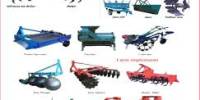Soil defertilisation is the technique of lowering soil fertility in order to limit the number of plants that can grow on it. It is often used to describe the process by which soil loses fertility due to a variety of circumstances, the most common of which is a depletion or imbalance of critical elements required for plant growth. It is frequently done on land that is not designated for agriculture, such as city parks.
This can happen naturally over time or due to human activities such as:
- Overuse of Fertilizers: Continuous and excessive application of chemical fertilizers can alter the soil’s nutrient balance, leading to nutrient imbalances or soil acidification.
- Erosion: Soil erosion can physically remove the top layer of fertile soil, which contains organic matter and essential nutrients.
- Salinisation: Over-irrigation in arid regions can lead to the accumulation of salts in the soil, making it unsuitable for most plant species.
- Pollution: Soil pollution from industrial chemicals, heavy metals, or untreated wastewater can contaminate the soil and affect its fertility.
- Climate Change: Altered precipitation patterns, temperature fluctuations, and extreme weather events associated with climate change can degrade soil quality.
- Deforestation: Removing vegetation cover can lead to soil erosion and loss of organic matter, reducing soil fertility.
- Poor Agricultural Practices: Practices like monoculture (continuous planting of the same crop) without crop rotation or cover cropping can deplete specific nutrients from the soil.
Benefit
Unwanted plants (weeds) on non-agricultural property, such as municipal parks or other common places, can become a nuisance to the city’s communal services, costing time and money.
In rare circumstances, coupled with soil defertilisation, the pH and water content of the soil might be altered. This could result in a very different environment, allowing more specialised plants/vegetation to flourish and take root.
In practice
Soil defertilization is accomplished by planting specialized cover crops (such as Phacelia, Sinapis alba, and Lolium multiflorum) and then removing them from the soil rather than plowing them under. This removes the nutrients that have collected in the crops along with the crops themselves. Crops may be employed on other land that requires fertilization (rather than defertilization), such as agricultural land.
To reduce soil defertilization, sustainable agriculture approaches such as crop rotation, cover cropping, organic farming, and integrated pest management are promoted. These strategies promote soil health by retaining organic matter, enhancing soil structure, and naturally balancing nutrient levels.
















